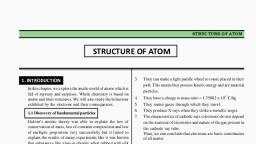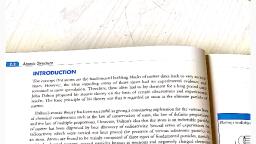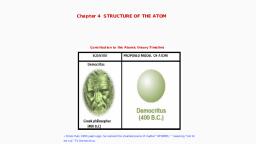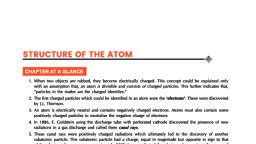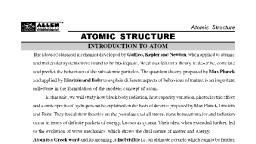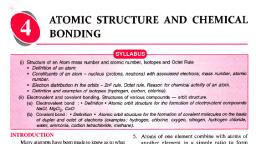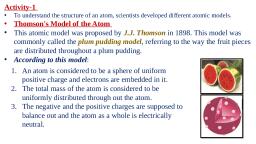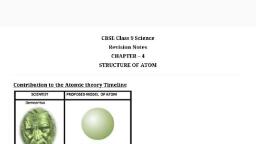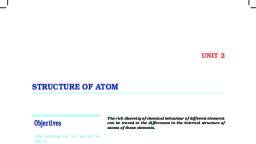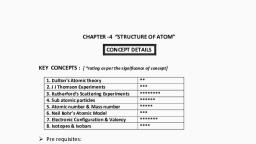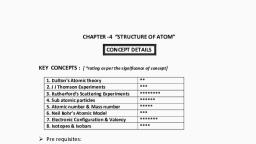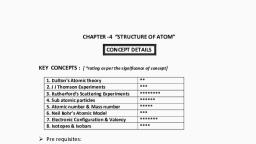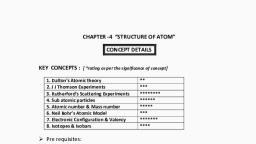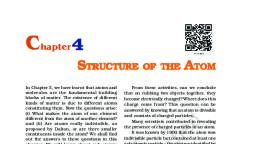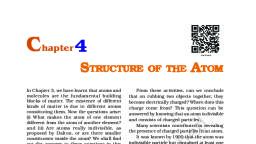Page 1 :
WHAT IS INSIDE THE ATOM
Page 2 :
In previous chapters we have learnt that all matter is made up of atoms. , The first modern atomic theory was proposed by John Dalton. , According to Dalton, atoms were indivisible. That means that they could not be divided into further smaller parts. Atoms of an element are all identical to each other and different from the atoms of other elements. , This naturally led scientists to ask the following questions :, Why are the atoms of different elements different?, Is there anything inside atom that make them to be same or different?, Atoms are too small to be seen with naked eye. Scientists could not see the atoms, they could find its properties on the basis of experiments., During electrolysis experiments, Michael Faraday discovered that atoms were acquiring negative charge during process of electrolysis., Michael Faraday's discovery raised questions about the indivisibility of atoms.
Page 3 :
How could a neutral atom become electrically charged? , It is a contradiction to Dalton's theory that the atom was indivisible. , This led to an idea that there must exist some tiny particles in atom which are responsible for atom to behave sometimes as a charged particle., As atom is considered electrically neutral, it probably had some positive constituents and equal number of negative constituents to maintain its electrical neutrality. This gave scope to think about sub-atomic particles., Sub-atomic Particles, Dalton proposed that atoms could not be divided. Experimental evidence began to show that atoms were divisible and are made up of small particle(s)., These particles are smaller than the atom and are present inside an atom, they are called sub - atomic particles., Since atoms are neutral they should have at least two types of sub-atomic particles, one is positively charged and another is negatively charged., In fact, 3 different subatomic particles discovered, the third one is a neutral.
Page 4 :
Electrons, Protons and Neutrons , We read about Faraday's electrolysis experiments earlier. Other experiments on gases were carried out in the latter part of 19th century. , Scientists studied the effects of applying electric current to gases at low pressure by using discharge tubes., In 1897, a British physicist Joseph John Thomson demonstrated on the basis of these experiments that negatively charged particles are present in the atoms., Initially, Thomson thought that the negative particles would be different for each element. But after carrying out experiments with many different materials, he found that the negatively charged particles from all the materials were always identical. , He concluded that same type of negatively charged particles are present in the atoms of all the elements., These particles had a very small mass and are now called electrons.





















